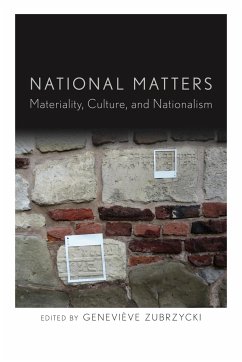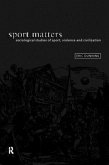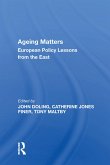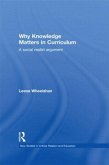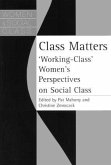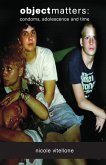National Matters
Materiality, Culture, and Nationalism
Herausgeber: Zubrzycki, Geneviève
National Matters
Materiality, Culture, and Nationalism
Herausgeber: Zubrzycki, Geneviève
- Broschiertes Buch
- Merkliste
- Auf die Merkliste
- Bewerten Bewerten
- Teilen
- Produkt teilen
- Produkterinnerung
- Produkterinnerung
Genevi¿ Zubrzycki is Associate Professor of Sociology and Director of the Weiser Center for Europe and Eurasia at the University of Michigan.
Andere Kunden interessierten sich auch für
![Burning Matters Burning Matters]() Peter C LittleBurning Matters39,99 €
Peter C LittleBurning Matters39,99 €![Sport Matters Sport Matters]() Eric DunningSport Matters77,99 €
Eric DunningSport Matters77,99 €![Ageing Matters Ageing Matters]() John DolingAgeing Matters64,99 €
John DolingAgeing Matters64,99 €![Matters of Life and Death Matters of Life and Death]() Iona HeathMatters of Life and Death35,99 €
Iona HeathMatters of Life and Death35,99 €![Why Knowledge Matters in Curriculum Why Knowledge Matters in Curriculum]() Leesa WheelahanWhy Knowledge Matters in Curriculum68,99 €
Leesa WheelahanWhy Knowledge Matters in Curriculum68,99 €![Class Matters Class Matters]() Christine Zmroczek (ed.)Class Matters64,99 €
Christine Zmroczek (ed.)Class Matters64,99 €![Object matters Object matters]() Nicole VitelloneObject matters24,99 €
Nicole VitelloneObject matters24,99 €-
-
-
Genevi¿ Zubrzycki is Associate Professor of Sociology and Director of the Weiser Center for Europe and Eurasia at the University of Michigan.
Hinweis: Dieser Artikel kann nur an eine deutsche Lieferadresse ausgeliefert werden.
Hinweis: Dieser Artikel kann nur an eine deutsche Lieferadresse ausgeliefert werden.
Produktdetails
- Produktdetails
- Verlag: Stanford University Press
- Seitenzahl: 288
- Erscheinungstermin: 9. Mai 2017
- Englisch
- Abmessung: 226mm x 152mm x 18mm
- Gewicht: 376g
- ISBN-13: 9781503602533
- ISBN-10: 1503602532
- Artikelnr.: 47291312
- Herstellerkennzeichnung
- Libri GmbH
- Europaallee 1
- 36244 Bad Hersfeld
- gpsr@libri.de
- Verlag: Stanford University Press
- Seitenzahl: 288
- Erscheinungstermin: 9. Mai 2017
- Englisch
- Abmessung: 226mm x 152mm x 18mm
- Gewicht: 376g
- ISBN-13: 9781503602533
- ISBN-10: 1503602532
- Artikelnr.: 47291312
- Herstellerkennzeichnung
- Libri GmbH
- Europaallee 1
- 36244 Bad Hersfeld
- gpsr@libri.de
Geneviève Zubrzycki is Associate Professor of Sociology and Director of the Weiser Center for Europe and Eurasia at the University of Michigan.
Matter and Meaning: A Cultural Sociology of Nationalism
—Geneviève Zubrzycki
1. Artisans and the Construction of the French State: The Political Role of
the Louvre's Workshops
—Chandra Mukerji
2. In, On, and Of the Inviolable Soil: Pottery Fragments and the
Materiality of Italian Nationhood
—Fiona Greenland
3. Raw Materials: Natural Resources, Technological Discourse, and the
Making of Canadian Nationalism
—Melissa Aronczyk
4. Simultaneously Worlds Apart: Placing National Diversity on Display at
Boston's Museum of Fine Arts
—Peggy Levitt
5. A Brief History of Sweat: Inscribing "National Feeling" on and through a
Football Jersey
—Claudio E. Benzecry
6. That Banal Object of Nationalism: "Old Stones" as French Heritage in the
Early Days of Public Television
—Alexandra Kowalski
7. The Mythical Power of Everyday Objects: The Material Culture of Radical
Nationalism in Postsocialist Hungary
—Virág Molnár
8. Engaging Objects: A Phenomenology of the Tea Ceremony and Japaneseness
—Kristin Surak
9. Traces and Steps: Expanding Polishness through a Jewish Sensorium?
—Geneviève Zubrzycki
10. A Temple of Social Hope? Tempelhof Airport in Berlin and Its
Transformation
—Dominik Bartmäski
—Geneviève Zubrzycki
1. Artisans and the Construction of the French State: The Political Role of
the Louvre's Workshops
—Chandra Mukerji
2. In, On, and Of the Inviolable Soil: Pottery Fragments and the
Materiality of Italian Nationhood
—Fiona Greenland
3. Raw Materials: Natural Resources, Technological Discourse, and the
Making of Canadian Nationalism
—Melissa Aronczyk
4. Simultaneously Worlds Apart: Placing National Diversity on Display at
Boston's Museum of Fine Arts
—Peggy Levitt
5. A Brief History of Sweat: Inscribing "National Feeling" on and through a
Football Jersey
—Claudio E. Benzecry
6. That Banal Object of Nationalism: "Old Stones" as French Heritage in the
Early Days of Public Television
—Alexandra Kowalski
7. The Mythical Power of Everyday Objects: The Material Culture of Radical
Nationalism in Postsocialist Hungary
—Virág Molnár
8. Engaging Objects: A Phenomenology of the Tea Ceremony and Japaneseness
—Kristin Surak
9. Traces and Steps: Expanding Polishness through a Jewish Sensorium?
—Geneviève Zubrzycki
10. A Temple of Social Hope? Tempelhof Airport in Berlin and Its
Transformation
—Dominik Bartmäski
Matter and Meaning: A Cultural Sociology of Nationalism
—Geneviève Zubrzycki
1. Artisans and the Construction of the French State: The Political Role of
the Louvre's Workshops
—Chandra Mukerji
2. In, On, and Of the Inviolable Soil: Pottery Fragments and the
Materiality of Italian Nationhood
—Fiona Greenland
3. Raw Materials: Natural Resources, Technological Discourse, and the
Making of Canadian Nationalism
—Melissa Aronczyk
4. Simultaneously Worlds Apart: Placing National Diversity on Display at
Boston's Museum of Fine Arts
—Peggy Levitt
5. A Brief History of Sweat: Inscribing "National Feeling" on and through a
Football Jersey
—Claudio E. Benzecry
6. That Banal Object of Nationalism: "Old Stones" as French Heritage in the
Early Days of Public Television
—Alexandra Kowalski
7. The Mythical Power of Everyday Objects: The Material Culture of Radical
Nationalism in Postsocialist Hungary
—Virág Molnár
8. Engaging Objects: A Phenomenology of the Tea Ceremony and Japaneseness
—Kristin Surak
9. Traces and Steps: Expanding Polishness through a Jewish Sensorium?
—Geneviève Zubrzycki
10. A Temple of Social Hope? Tempelhof Airport in Berlin and Its
Transformation
—Dominik Bartmäski
—Geneviève Zubrzycki
1. Artisans and the Construction of the French State: The Political Role of
the Louvre's Workshops
—Chandra Mukerji
2. In, On, and Of the Inviolable Soil: Pottery Fragments and the
Materiality of Italian Nationhood
—Fiona Greenland
3. Raw Materials: Natural Resources, Technological Discourse, and the
Making of Canadian Nationalism
—Melissa Aronczyk
4. Simultaneously Worlds Apart: Placing National Diversity on Display at
Boston's Museum of Fine Arts
—Peggy Levitt
5. A Brief History of Sweat: Inscribing "National Feeling" on and through a
Football Jersey
—Claudio E. Benzecry
6. That Banal Object of Nationalism: "Old Stones" as French Heritage in the
Early Days of Public Television
—Alexandra Kowalski
7. The Mythical Power of Everyday Objects: The Material Culture of Radical
Nationalism in Postsocialist Hungary
—Virág Molnár
8. Engaging Objects: A Phenomenology of the Tea Ceremony and Japaneseness
—Kristin Surak
9. Traces and Steps: Expanding Polishness through a Jewish Sensorium?
—Geneviève Zubrzycki
10. A Temple of Social Hope? Tempelhof Airport in Berlin and Its
Transformation
—Dominik Bartmäski

